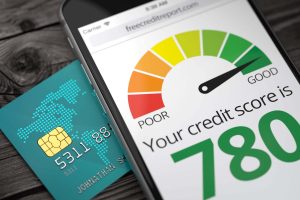1. The Shift Toward Mobile Micropayments: A Clear Trajectory
Over the past five years, mobile micropayments have transformed from a niche payment method into a mainstream financial activity. In 2025, the rapid uptake of smartphones, contactless infrastructure, and digital wallets has fostered an environment where transactions under $10 are increasingly handled via mobile devices. Whether it’s buying a digital newspaper, subscribing to a game, or tipping a content creator, micropayments now reflect a daily consumer habit across South Korea.
According to recent academic research and industry data, mobile micropayment users have increased by over 30% from 2023 to 2025. This growth isn’t only quantitative; it’s also qualitative, revealing shifts in demographic preferences, frequency of use, and preferred services.
2. Key Terms Explained
- Mobile Micropayment: A small transaction executed through a mobile phone, typically valued at less than ₩10,000.
- Consumer Behavior Pattern: The observable habits or tendencies consumers exhibit during product or service use.
- Digital Wallet: A mobile-based application that stores payment credentials and enables financial transactions.
- User Stickiness: The degree to which users return repeatedly to use a particular service.
3. Breakdown of 2025 User Demographics
A 2025 user analysis derived from mobile commerce reports and academic literature shows:
| Demographic Group | % of Micropayment Users | Primary Use Case |
| Teens (13–19) | 18% | Mobile games, music streaming |
| Young Adults (20–29) | 34% | Convenience store purchases |
| Adults (30–49) | 28% | Transportation, online shopping |
| Seniors (50+) | 20% | Utility bill payments, VOD access |
Young adults dominate usage, driven by lifestyle integration and platform familiarity. Interestingly, senior user participation has grown steadily due to intuitive UI design and increased smartphone literacy.
4.: How Today’s Consumers Use Micropayments
- App Selection: Users choose platforms like KakaoPay, Samsung Pay, or Toss.
- Link Payment Source: Link a debit card, bank account, or mobile credit.
- Choose a Product/Service: Items are typically below ₩10,000.
- Authenticate: Fingerprint, facial recognition, or password.
- Confirm Transaction: Payment completes in under 3 seconds.
5. Advantages and Emerging Pain Points
Benefits:
- Frictionless Spending: No need for physical cards or cash.
- Instant Access: Seamless payment for digital goods.
- Frequent Promotions: Cashback and reward integrations.
- Platform Ecosystem: Services bundled with chat, games, or media.
Challenges:
- Impulse Buying: Micro amounts lead to unnoticed overspending.
- Privacy Concerns: Repeated data-sharing may risk security.
- Platform Lock-In: Loyalty programs discourage switching.
- Transaction Transparency: Some platforms lack detailed usage logs.
6. Frequently Asked Questions (FAQ)
- Why are micropayments gaining traction?
- Users value speed, minimal effort, and flexibility. They’re perfect for digital-first lifestyles.
- Are there spending limits?
- Yes. Most carriers and wallets cap micropayments at ₩50,000 per month unless identity is verified.
- Can I reverse a micropayment?
- Generally difficult unless the merchant explicitly supports it. Always read the refund policy.
- Are older users adopting micropayments?
- Increasingly, yes. Thanks to UI simplification and device familiarity, adoption among 50+ has grown.
7. Smart Strategies for Consumers in 2025
- Set Monthly Limits: Most apps allow users to pre-set caps to prevent overspending.
- Monitor Purchase Categories: Separate subscriptions from one-time buys.
- Enable Transaction Notifications: Instant alerts help avoid unauthorized activity.
- Choose Cross-Compatible Wallets: Those usable across multiple merchants offer more flexibility.
- Utilize Promotional Calendars: Plan purchases around cashback dates.
8. The Role of Platforms: Impact and Design Choices
Micropayment platforms play an active role in shaping how consumers behave. UI design, default settings, and available rewards guide habits more than users realize. The most successful services blend simplicity with psychological nudges like default tipping rates, streak-based rewards, or social sharing incentives.
Table: Comparison of Platform Influences on Behavior
| Platform | Behavior Influence Mechanism | Notable Feature |
| Toss | Daily challenge rewards | Transaction diaries |
| KakaoPay | Social gifting | Pre-set tip buttons |
| Samsung Pay | Loyalty integration | Integrated point system |
| zeropaybank | Budget visualization tools | Micropayment optimization |
Among them, zeropaybank stands out in 2025 for offering tools that help users visualize cash flow, spot spending patterns, and adapt usage through AI-based insights. Their goal is not just to process payments but to inform smarter financial habits.
9. Solutions for Identified Problems
| Problem | Practical Solution |
| Impulse Buying | Enable purchase delay timer on apps |
| Security Concerns | Use apps with two-factor authentication |
| Lack of Insight | Choose apps with monthly analytics reports |
| Overdependence on One Wallet | Register multiple platforms to compare perks |
10. Tips for Long-Term Digital Spending Success
- Review Weekly Usage: Develop a ritual to review payment history every Sunday night.
- Join Fintech Communities: Forums or groups offer insights, alerts, and app comparisons.
- Teach Financial Literacy Early: Encourage younger users to track expenses from the start.
- Audit Connected Services: Revoke access to unused subscriptions every 3 months.
11. Conclusion: Beyond Convenience, Toward Financial Mindfulness
2025 is not just about speed and simplicity in mobile micropayments. It’s about evolving toward conscious consumption. The surge in usage reflects more than just convenience; it indicates a shift in consumer values—favoring transparency, personalization, and control.
The most successful platforms are those that marry fast transactions with features that protect and educate users. As users continue to adapt, services that empower smarter financial decisions will win long-term loyalty.
By understanding your patterns and setting boundaries, mobile micropayments can become tools of empowerment rather than sources of hidden loss. It all comes down to choosing the right tools, staying informed, and putting intention behind every tap.










Add Comment